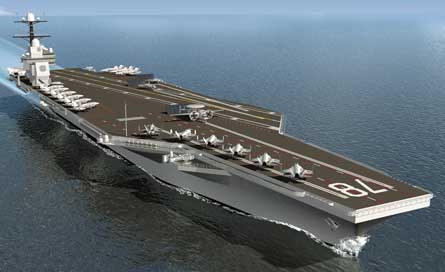With the US Navy's first CVN-21-class aircraft carrier scheduled to enter service in 2015, the long-delayed GPS-based joint precision approach and landing system (JPALS) programme is finally getting under way.
The USN has issued a request for proposals for development of a sea-based JPALS to equip aircraft carriers, amphibious assault ships and destroyers. This is the first increment in a planned family of differential-GPS landing systems for all the US armed services.
Likely bidders include teams led by Honeywell and Raytheon, with the former already having teamed with Boeing, Sierra Nevada and the UK's Qinetiq. Proposals are due in September, leading to contract award in March next year.
JPALS initial operational capability is set for 2014, to equip an existing carrier, but the schedule is being driven by the first CVN-21-class carrier, the USS Gerald Ford (CVN-78), which is planned to become operational in September 2015.
"JPALS can no longer slip because they need it for CVN-78," says Honeywell JPALS programme manager Phil Hess.
 |
|---|
© Northrop Grumman |
Current carriers and aircraft use the SPN-46 precision approach radar, but the Lockheed Martin F-35 Joint Strike Fighter will use JPALS. The CVN-78 design can support both SPN-46 and JPALS, the US Navy says, but funding has not yet been approved for the radar, so JPALS has to be ready when the ship enters service.
Sea-based JPALS uses shipboard-relative GPS, with the moving ship as the reference station datalinking position error corrections to the approaching aircraft to achieve the required 0.3m accuracy down to the carrier deck in all weathers.
The RFP has a threshold requirement for approaches down to 200ft (61m) decision height and 0.5nm (0.9km) visibility, equivalent to Category 1. But Hess says the objective requirement is for "autoland to the deck with the pilot in the loop", so that JPALS Increment 1 can replace the capability provided by the current SPN-46 radar.
Increment 2 of JPALS covers land-based Cat 1 systems interoperable with civil GPS-based local area augmentation systems. Honeywell has just received a $5.2 million US Air Force contract to help develop requirements for a Cat 2/3 approach capability.
Source: FlightGlobal.com























